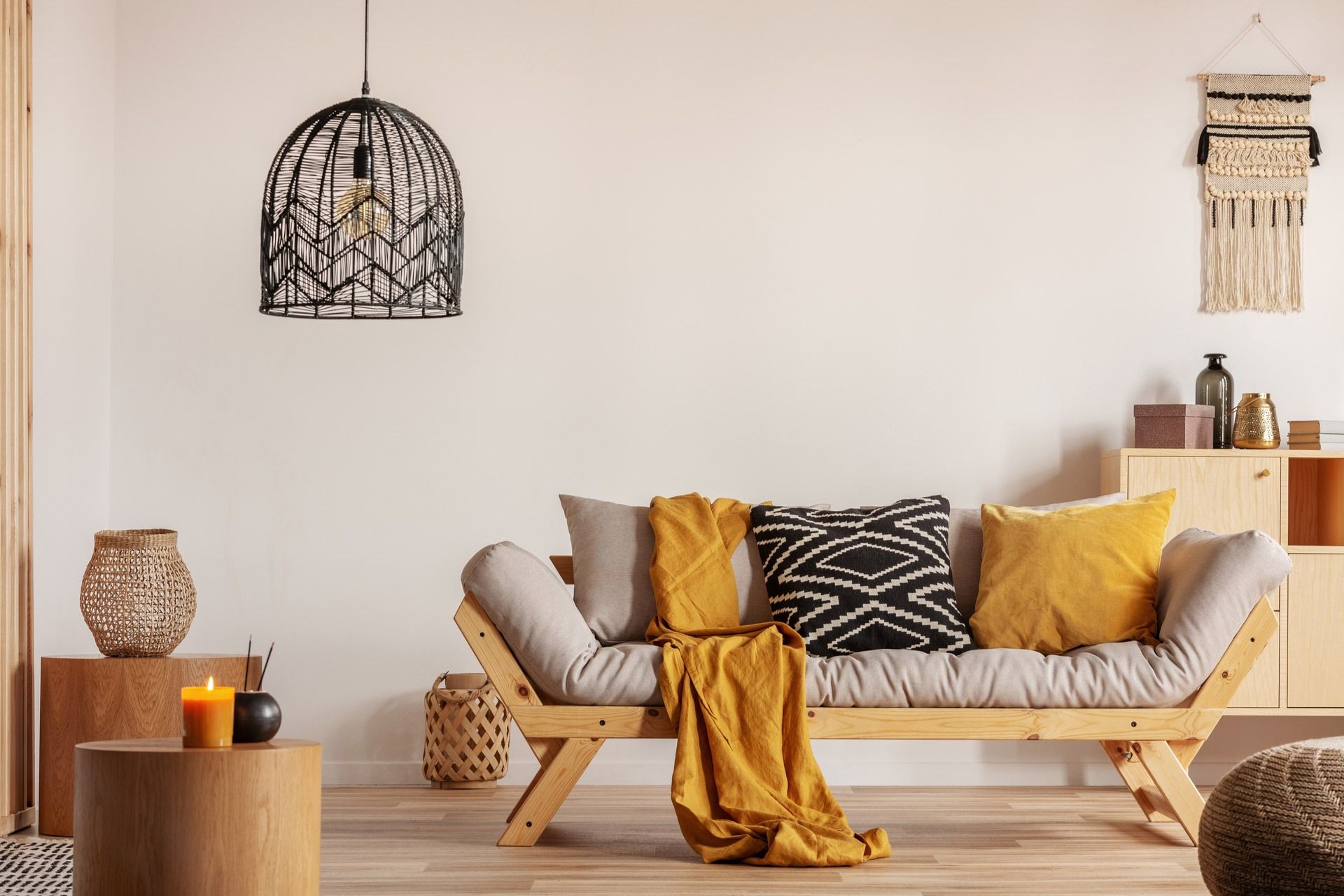The 7 elements of interior design

The elements of design are fundamental factors of any visual design.
In interior design, these are the building blocks at the base of any project and, analyzing each one of them, will help us understand a room's best characteristics, improve possible flows and achieve an overall pleasant composition.
To create a beautiful and meaningful design it’s important to understand the fundamentals of your subject, therefore, these seven design elements are the very first thing to learn.
Let's have a look at each one of them and put them into practice so you can start creating and designing your very own interiors.
Space
The element of space refers to the area within the room. This can be considered a white canvas on which the rest of the elements will be added to achieve a balanced composition. When we talk about space we'll have to consider the structure and dimensions of the area itself, like the walls, flooring, and ceiling. We need to take these in mind to be able to decide the type of furniture and decoration suitable for the space.
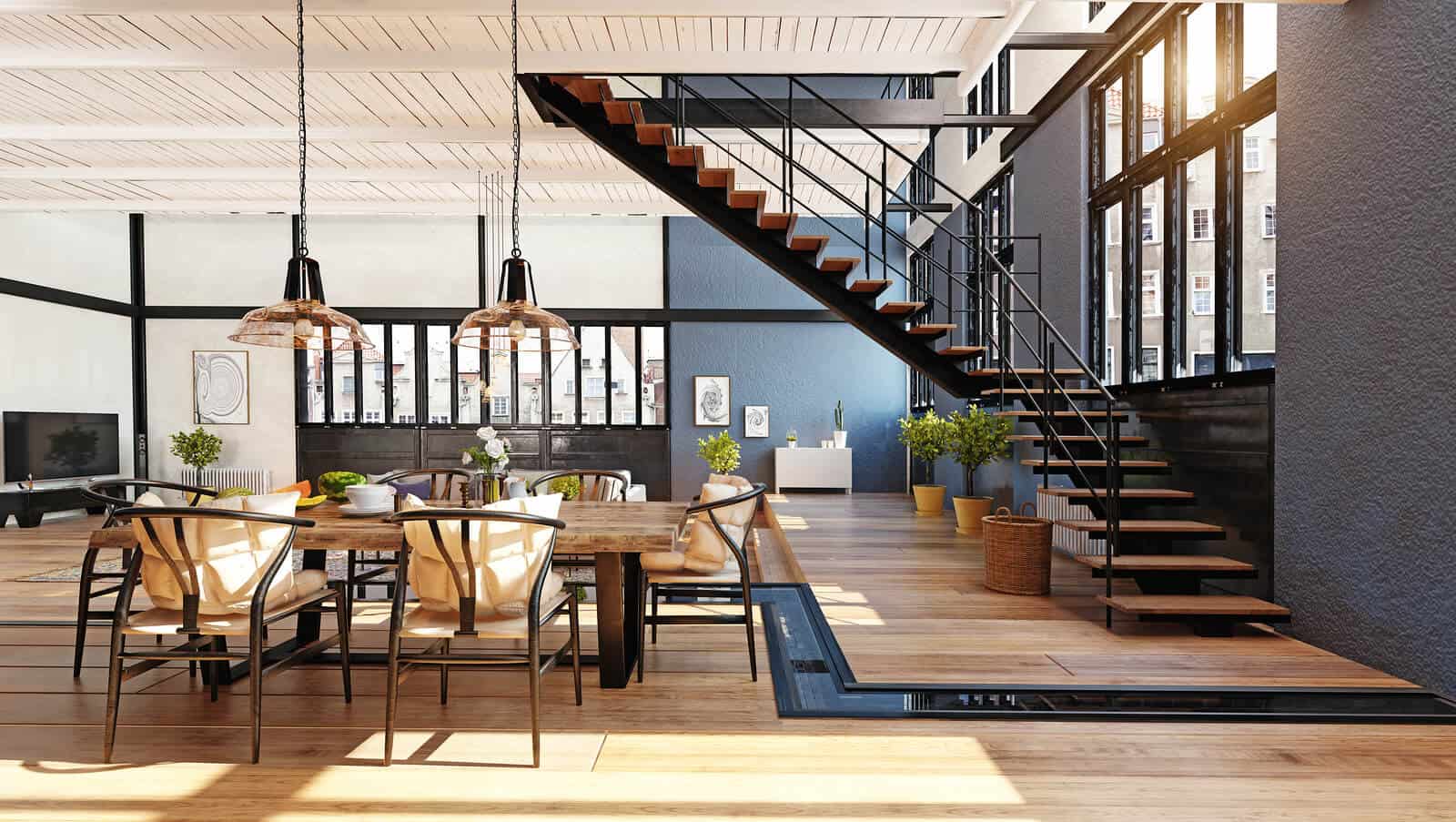
Our space's analysis will have to be broken down into two important parts which work together to create an even and well-balanced result:
• Positive space - this involves the presence of objects like furniture, artworks, and decorations that help achieve the desired design. One important thing to remember is that with too much positive space a place can feel busy and over-furnished.
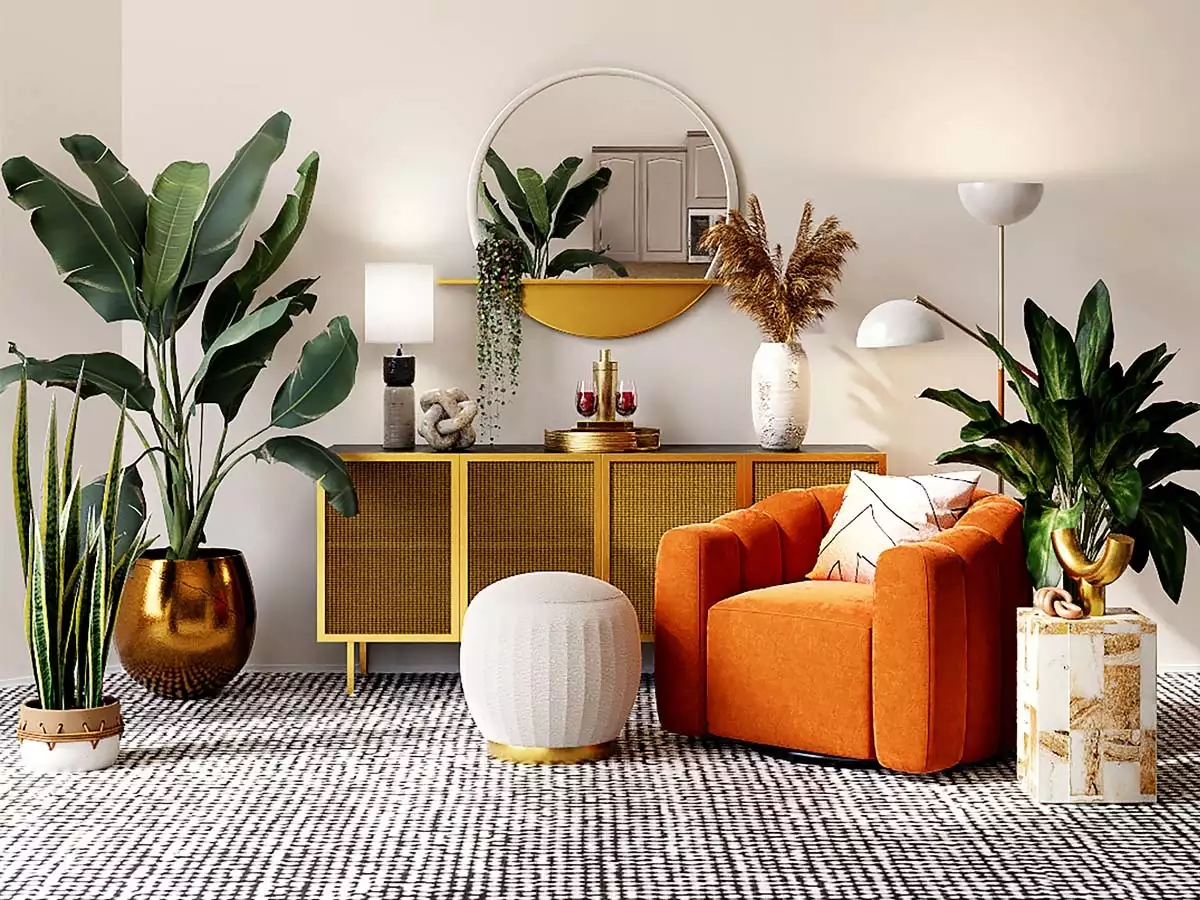
• Negative space - this is space that is intentionally left empty, often strategically used to make the room feel spacious, more prominent, and perhaps more significant. Negative space can create a focal point and emphasize the position of an object in the room, for example, an art piece or a stunning fireplace. Keep in mind that too much negative space can also make a room feel impersonal and sterile.
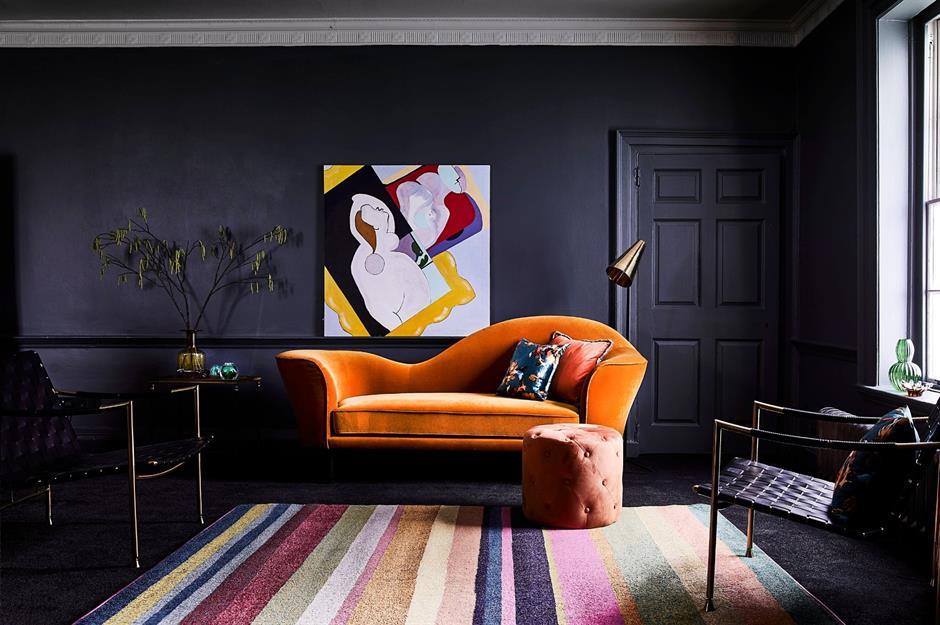
Line
The structure and a room’s furnishings can create lines that communicate a feeling of the space. Lines can be used to lead the eye to a focal point and create a sense of direction, movement, and growth.
Lines can be vertical, horizontal, diagonal, and curved. The choice and combination of these will determine the mood and feel you want to achieve. Horizontal lines, for example, create a sense of stability and help to make a narrow room feel wider; while vertical lines, are often used to create a sense of height.
Let's take a deeper look!
Vertical Lines tend to lift the eye upward, making the ceiling feel higher, creating a more formal atmosphere and a sense of grandeur.
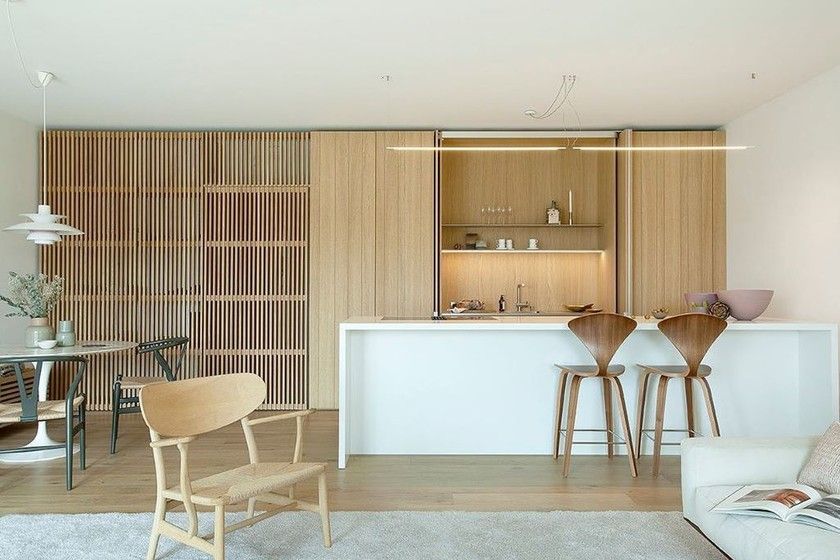
Horizontal Lines bring the eye downward, creating a sense of stability and intimacy. They can be used to make narrow spaces feel wider and can be directed to a specific focal point, emphasizing a room's key features.
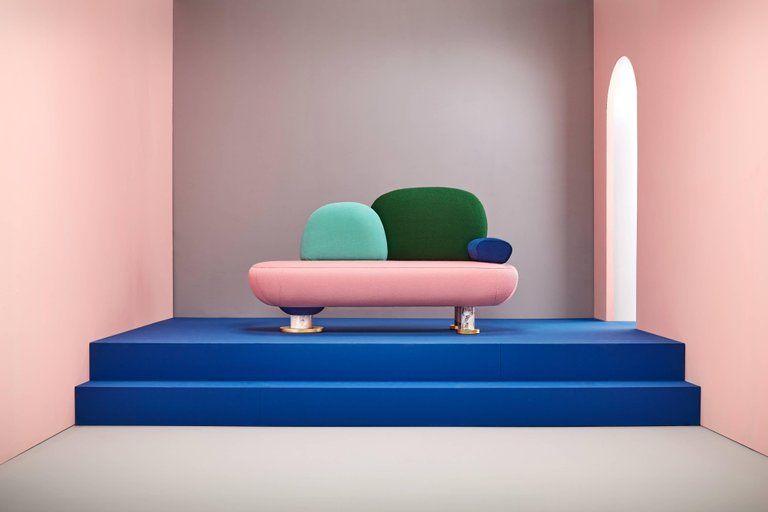
Diagonal Lines direct the eye upward and downward, bringing life and energy to the space, creating movement, direction, and a sense of three-dimensionality.
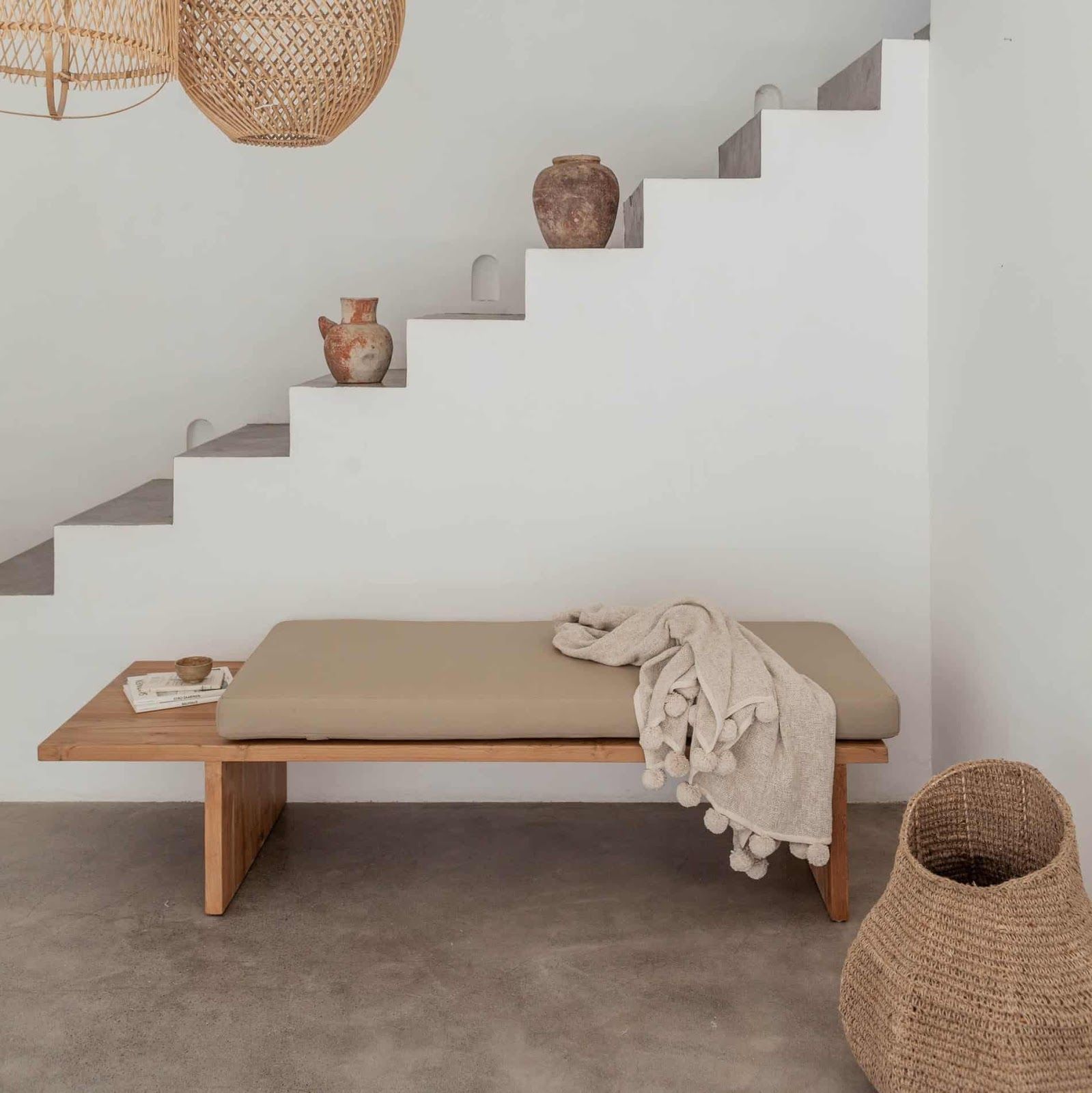
Curved Lines create movement and soften a space. They're voluminous and take place in an interior, transmitting a sense of comfort and relaxation.
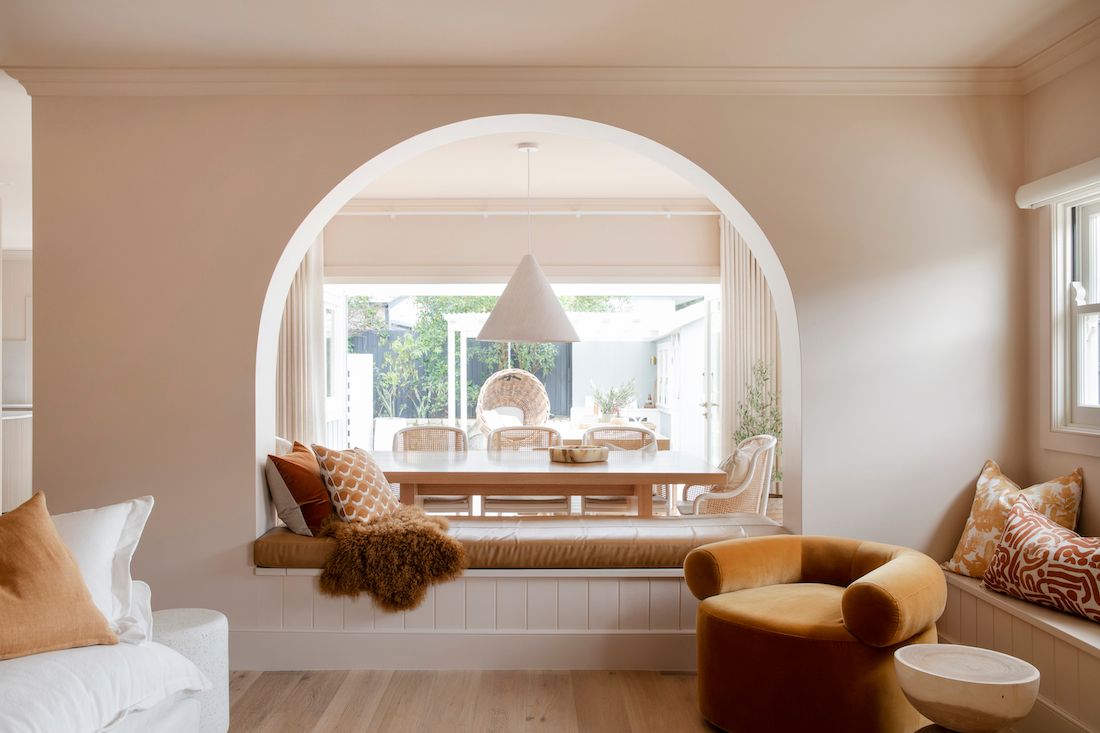
Shape
Shapes are another element to use and apply to create a composition pleasant to the eye, they will need to be used in accordance with a project's requirements. Shapes can be found in the structure of the space itself, furniture, and decoration.
They can be in a two-dimensional form, surrounded by an outline, or three-dimensional forms, with mass or volume.
We have different types of shapes that can be combined or used in contrast with each other to achieve the desired design:
Curvilinear: curves and rounded forms.
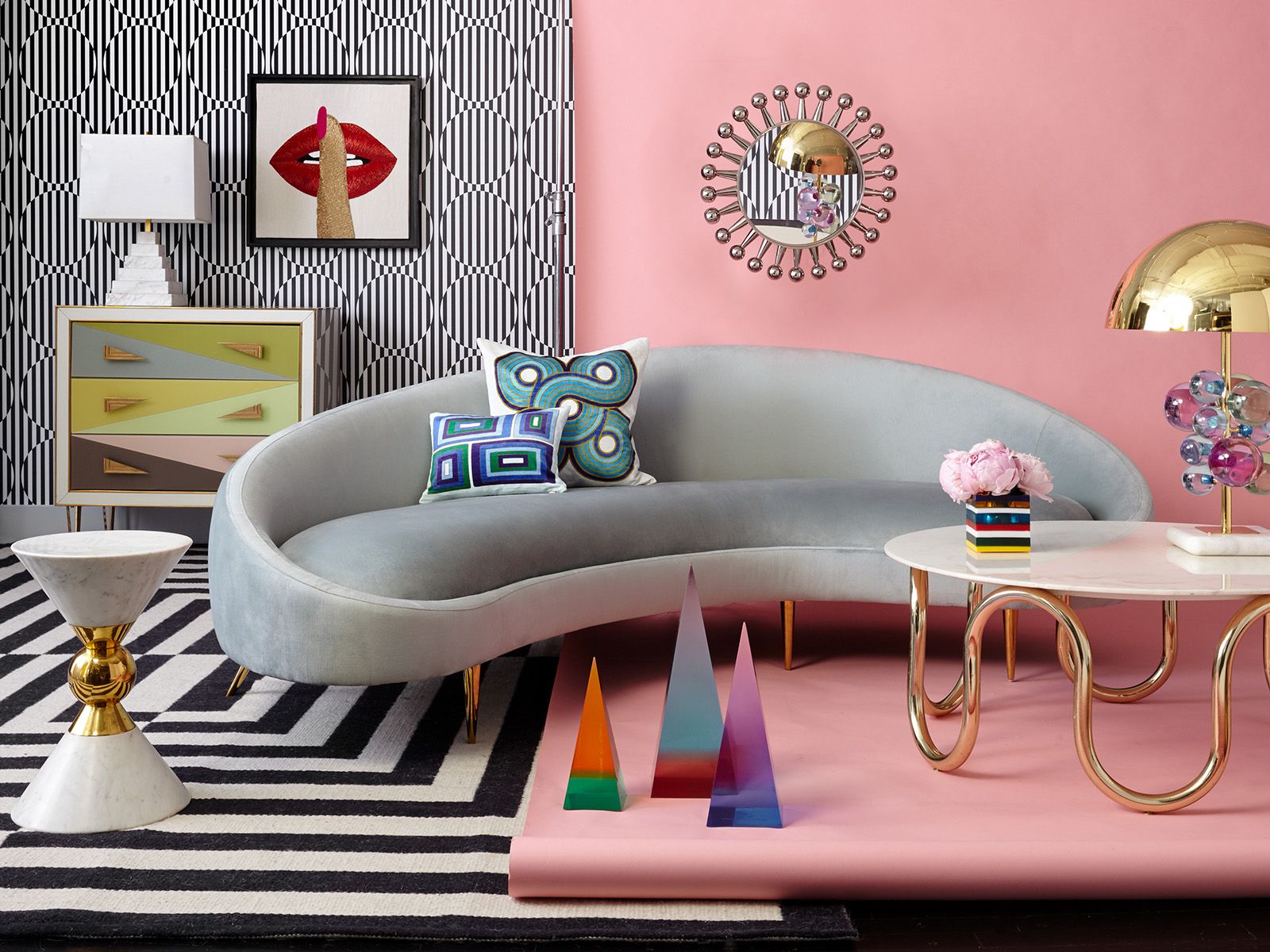
Rectilinear: straight edge and corners.
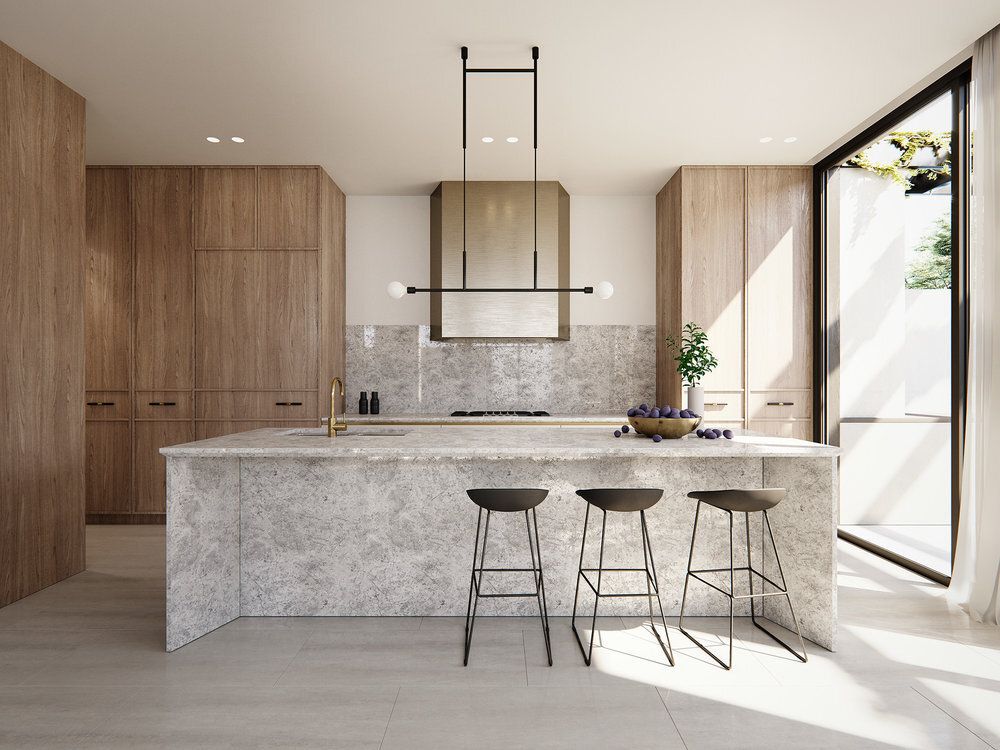
Geometric: based on mathematics, like rectangles, squares, circles, triangles, and so on.
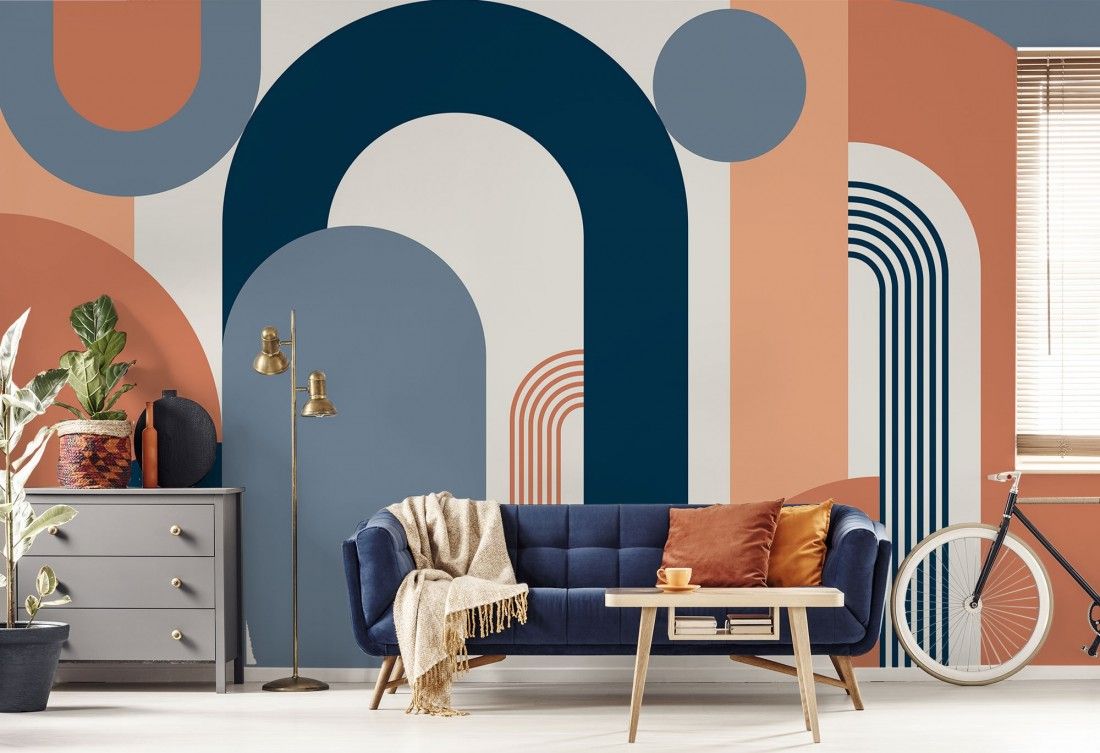
Natural or Organic: forms that we can find in nature, like leaves, flowers, and branches.
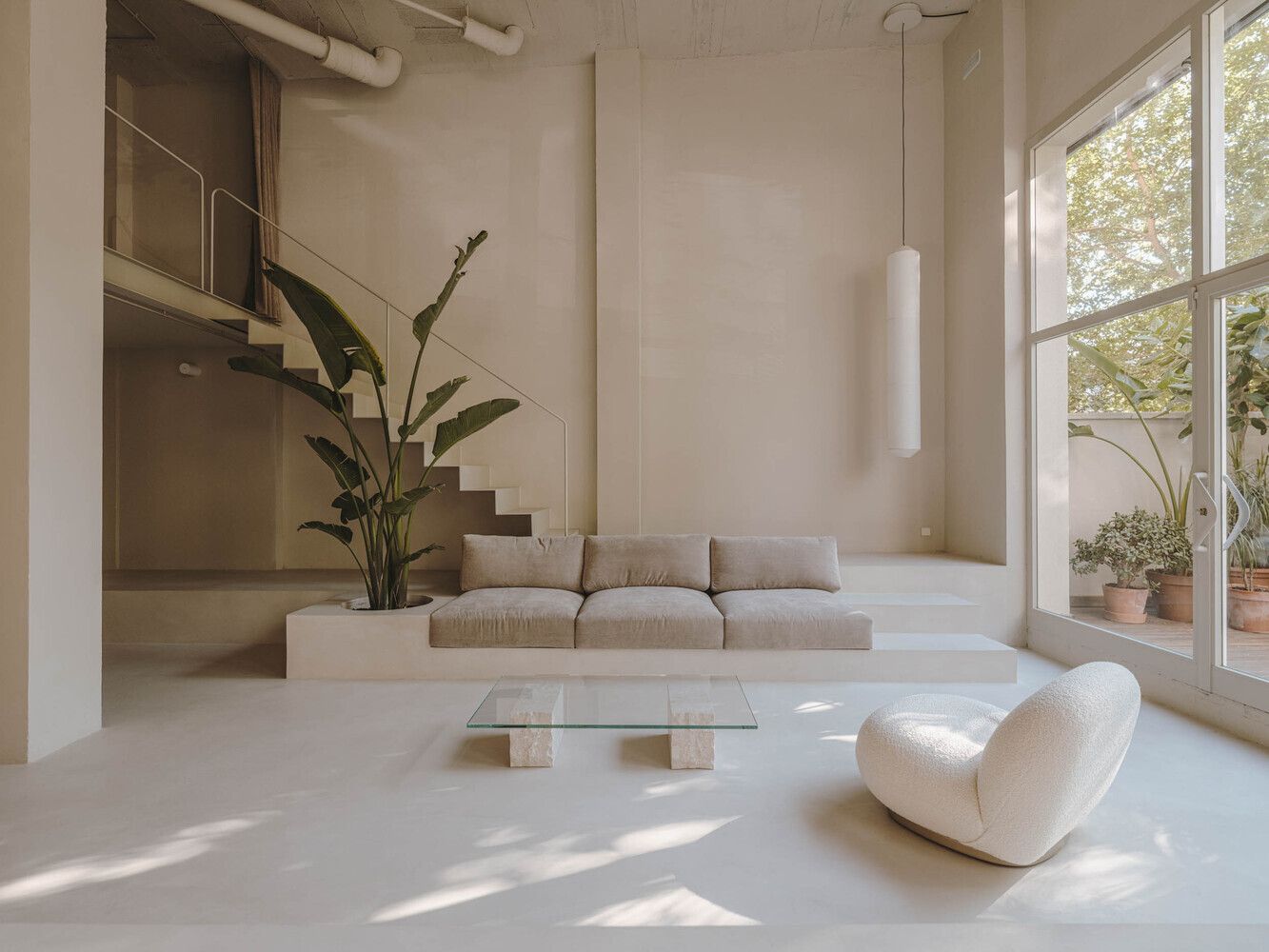
Abstract: forms that represent or remind us of things in nature but aren't natural themselves, for example, a flower-shaped chandelier.
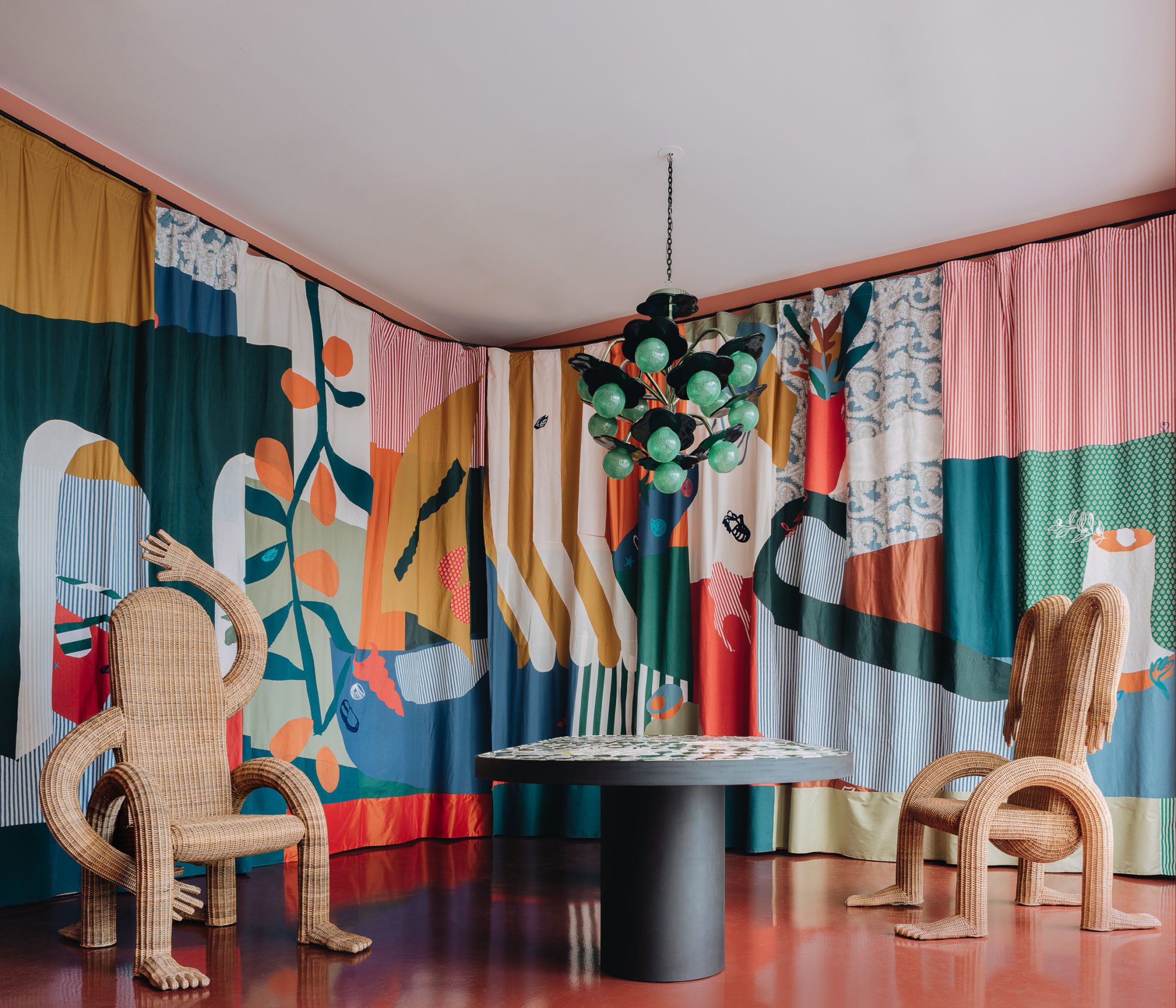
Colour
Colours are extremely important in interior design. These are strategically used to set a specific mood, evoke a feeling and create the desired atmosphere. The choice of the correct palette can help a room feel larger, brighter, and open, but also cozy, intimate, and relaxing.
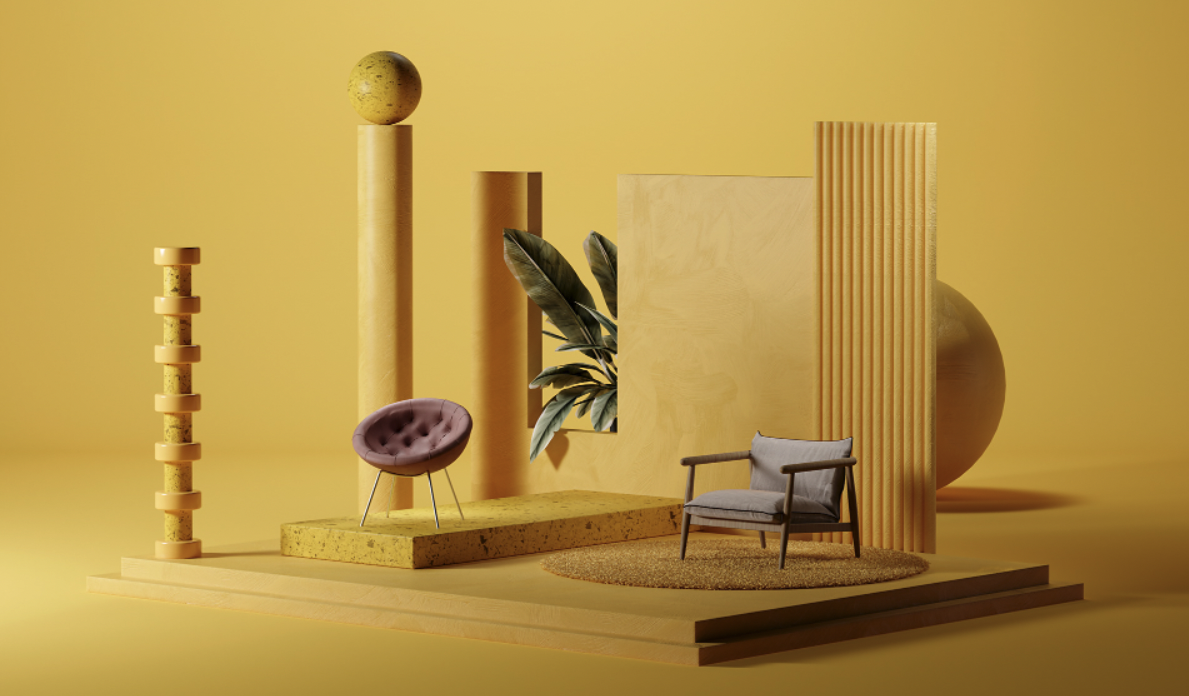
Colour is a complex element to work with but also an extremely fun one as it's all about experimenting and observing how a space can change depending on the shades we use.
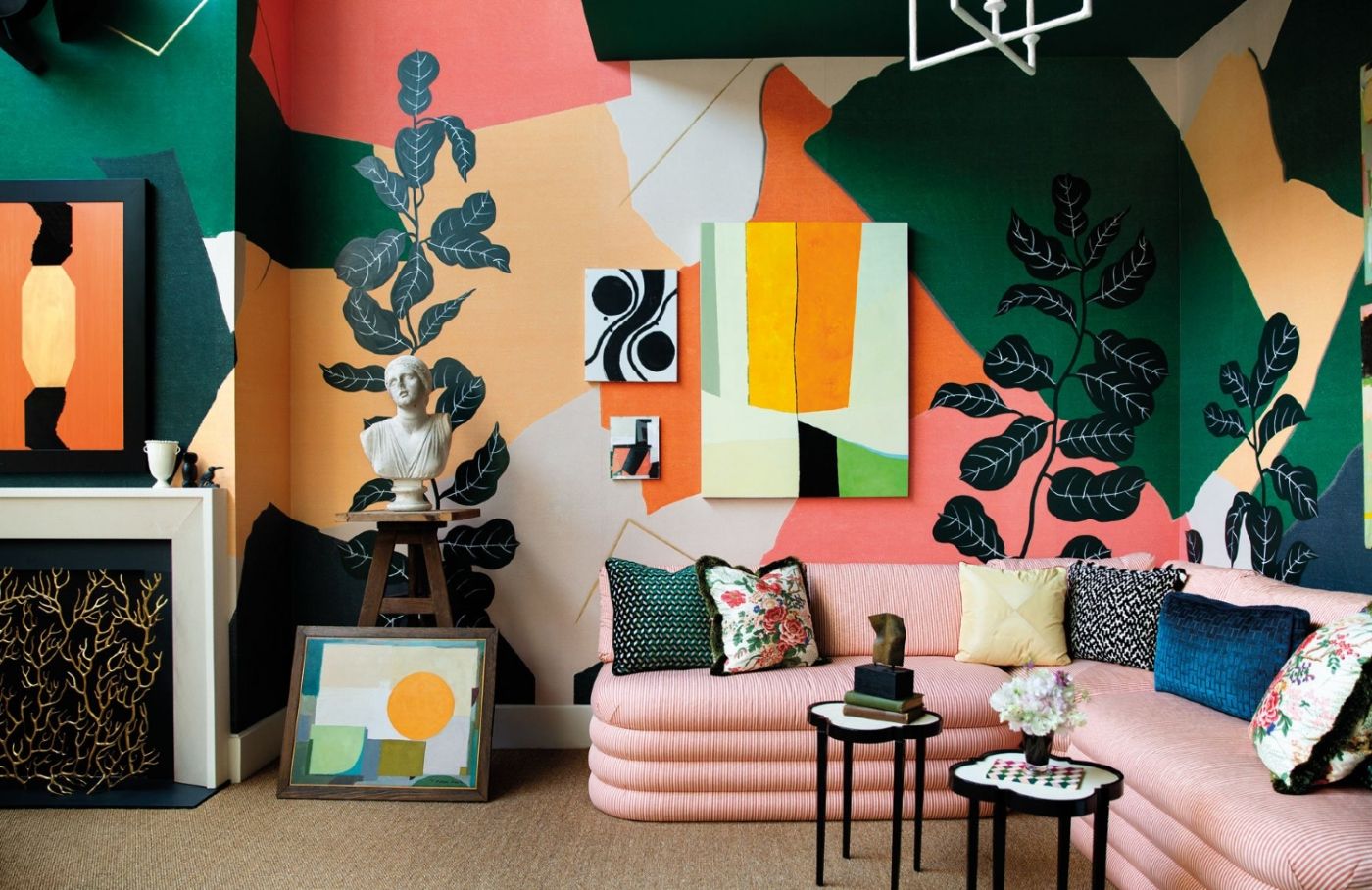
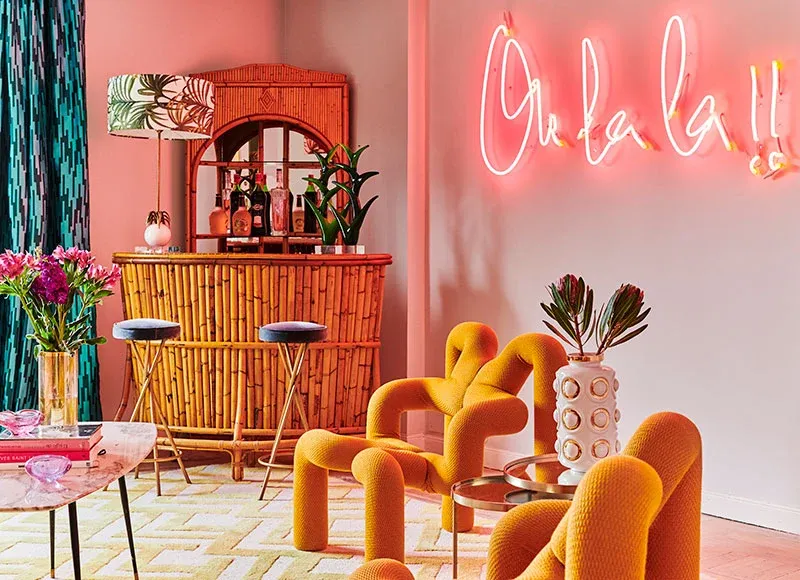
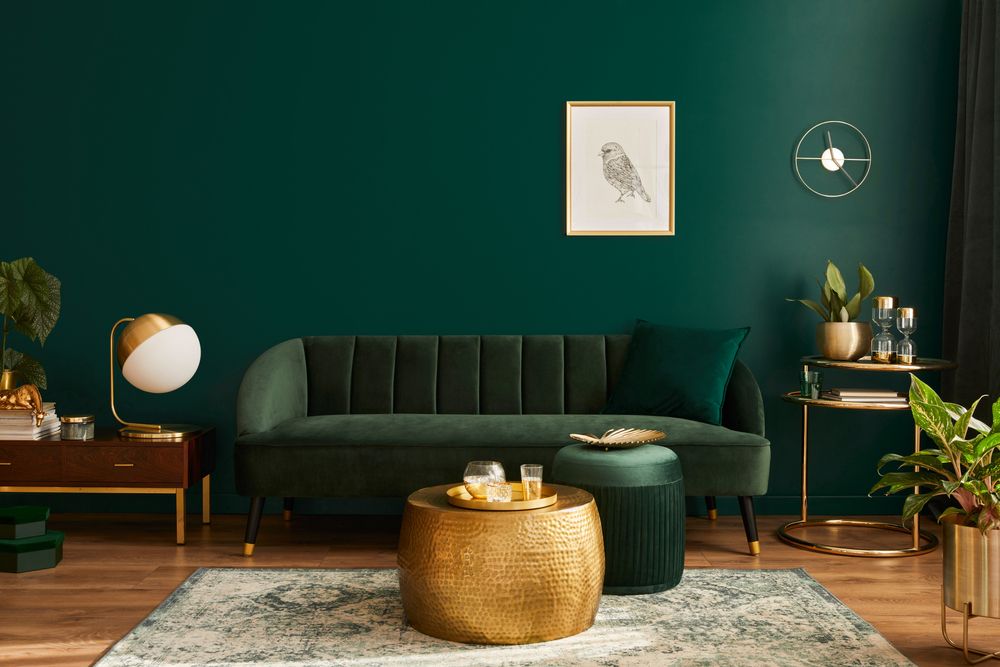
Texture
The texture is an object's physical feeling or visual appearance. In interior design, it refers to the quality and characteristics of a surface. They're carefully chosen to define a specific style and design period to achieve the desired look.
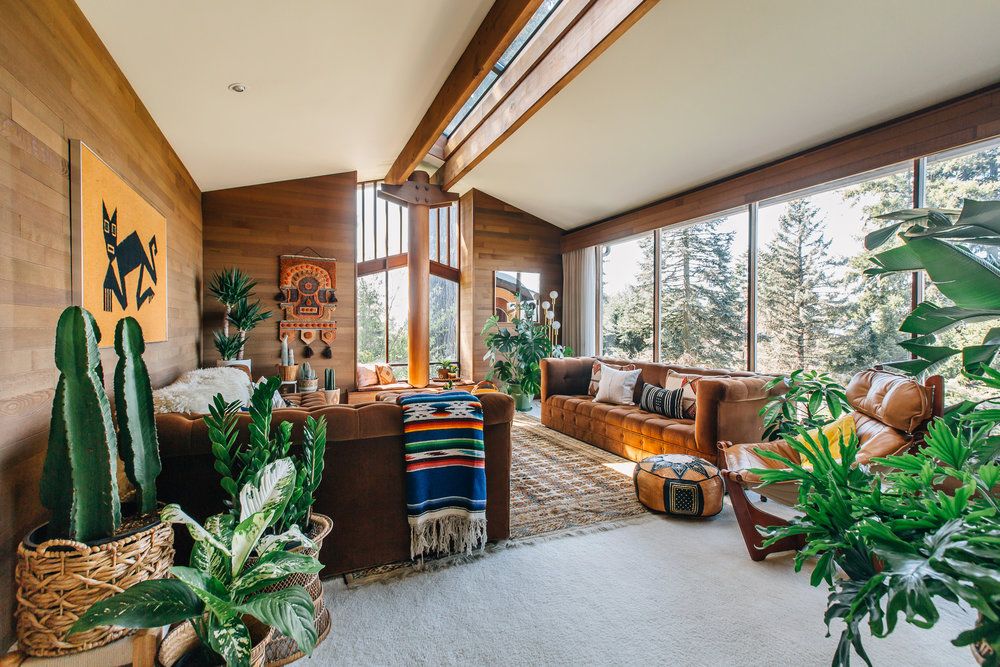
Textures can be described as shiny or rough, soft, gloss, or matt, and smooth or textured.
Textures can convey warmth and can be used to make a space feel cozier and lived-in, or they can also be used as a tool to reflect light, for example, to create brighter interiors.
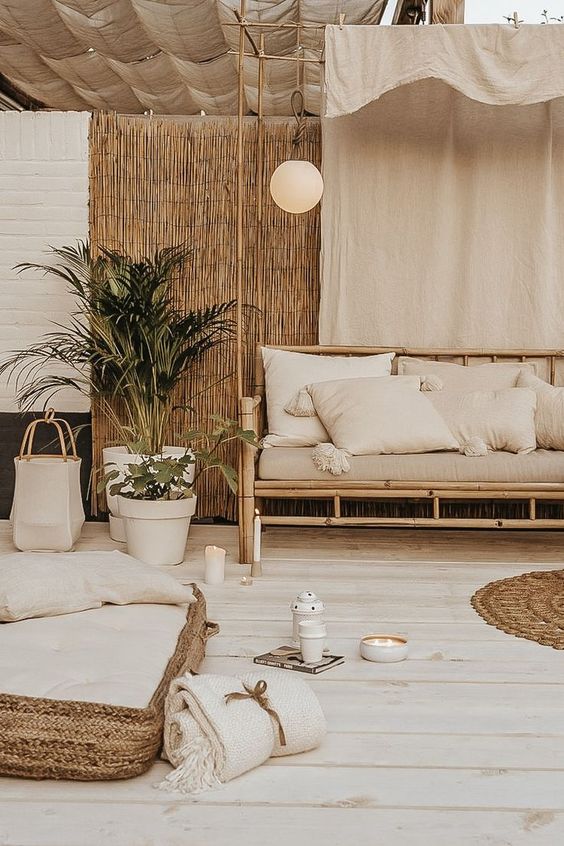
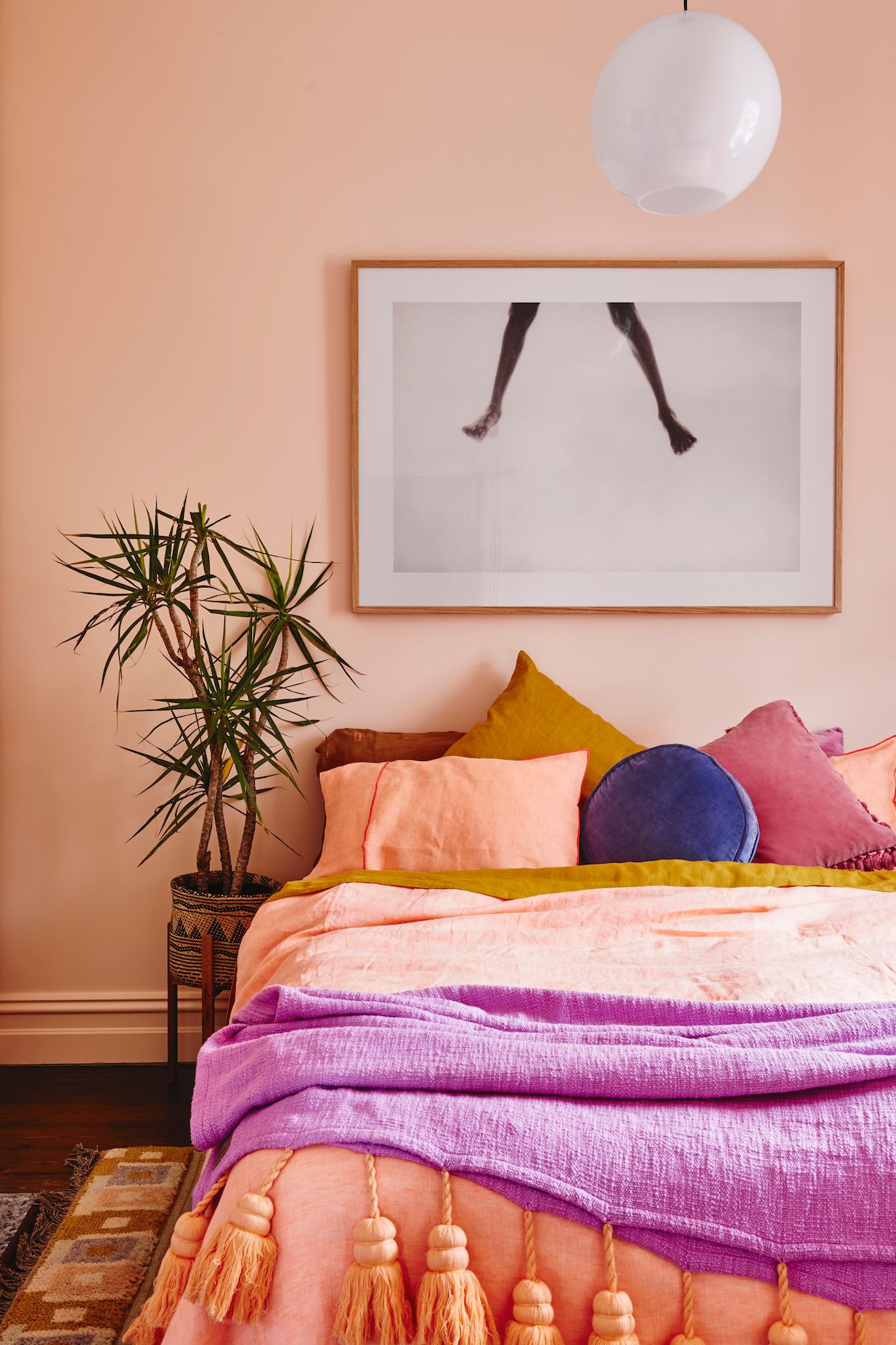
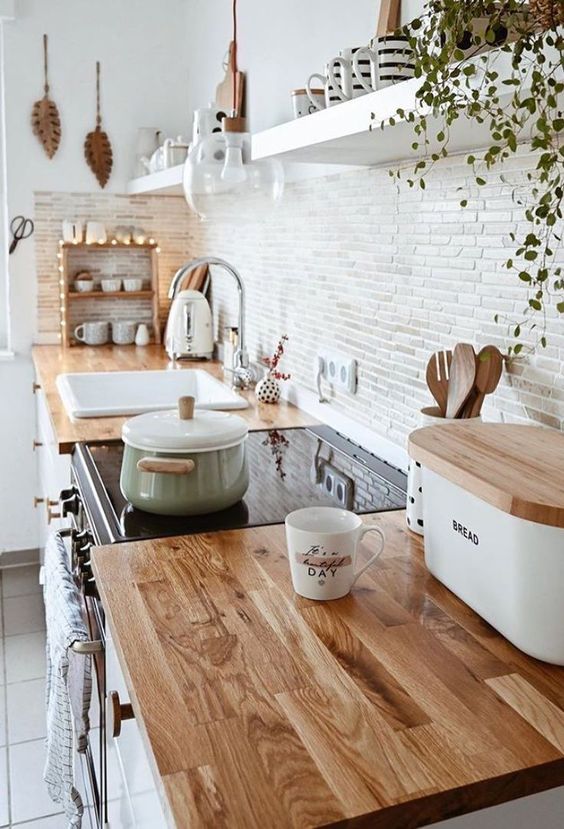
Light
Light is an essential element that adds dimension and movement, bringing the entire composition to life. Light, apart from being functional, can create depth and height, an intimate atmosphere, and can be used to draw attention to the room's key features.
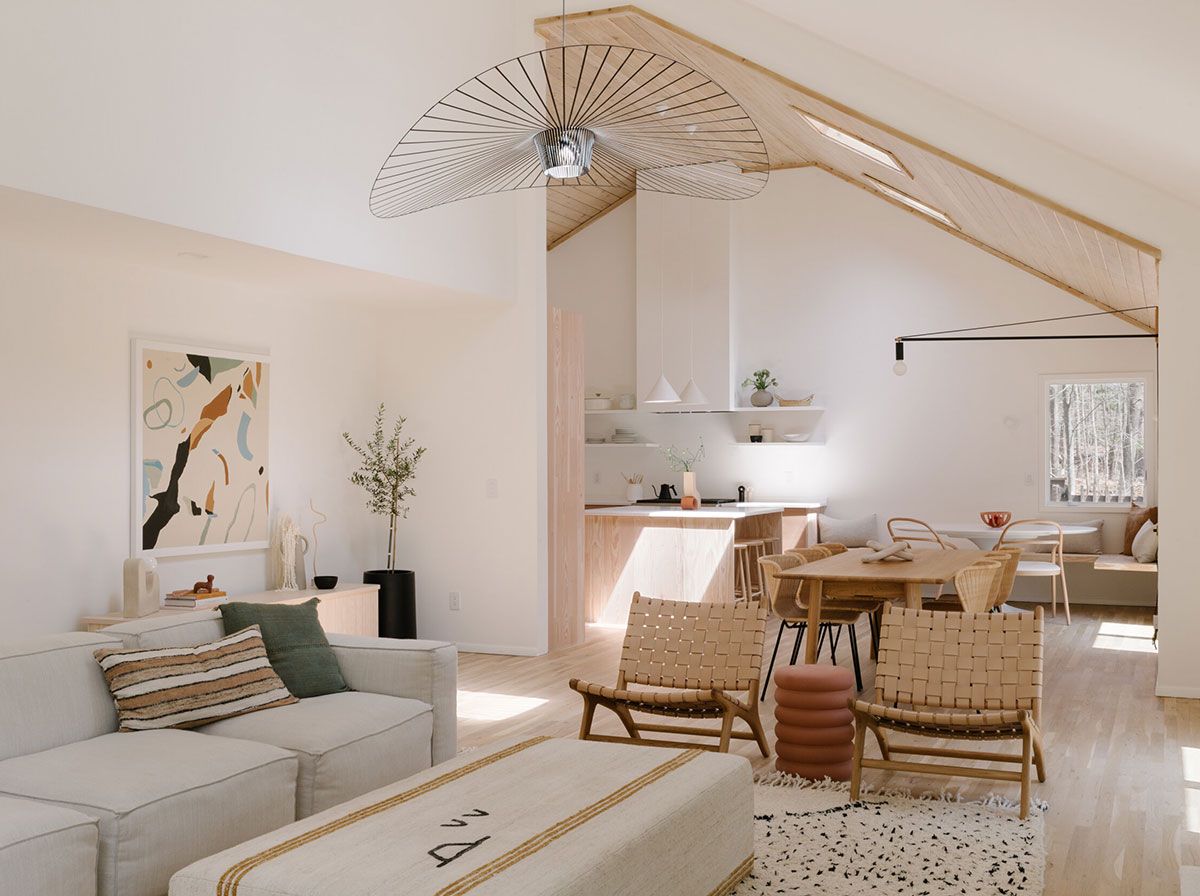
In interior design, two types of light sources are taken into consideration when drawing a project: natural and artificial lights.
It's important to assess how much natural light we have in the space and use it as a guide to take design decisions. Optimizing natural light using exterior glazing helps to highlight the beauty of the space, thereby reducing artificial lighting requirements and saving energy.
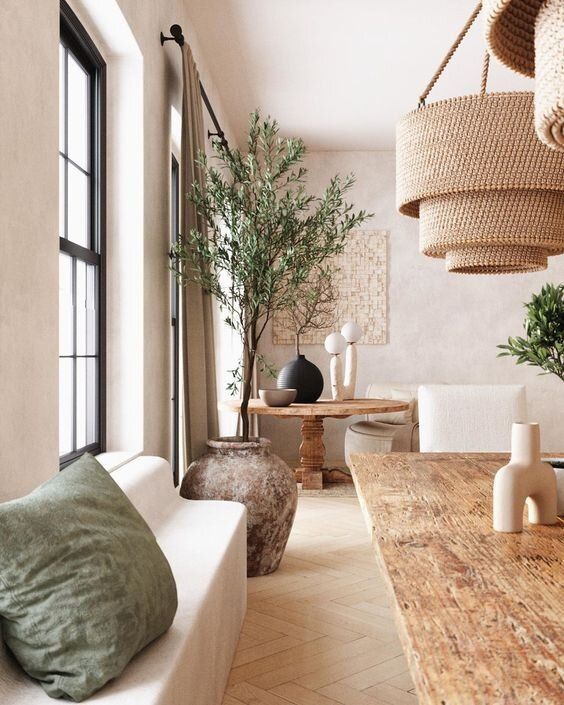
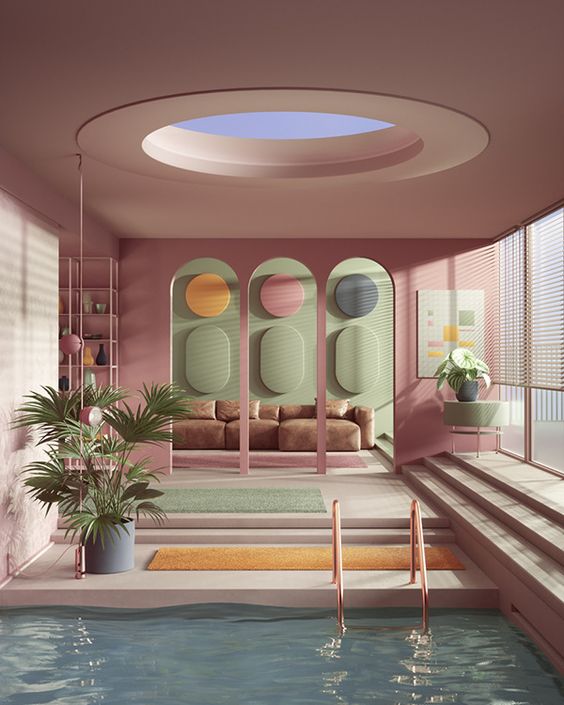
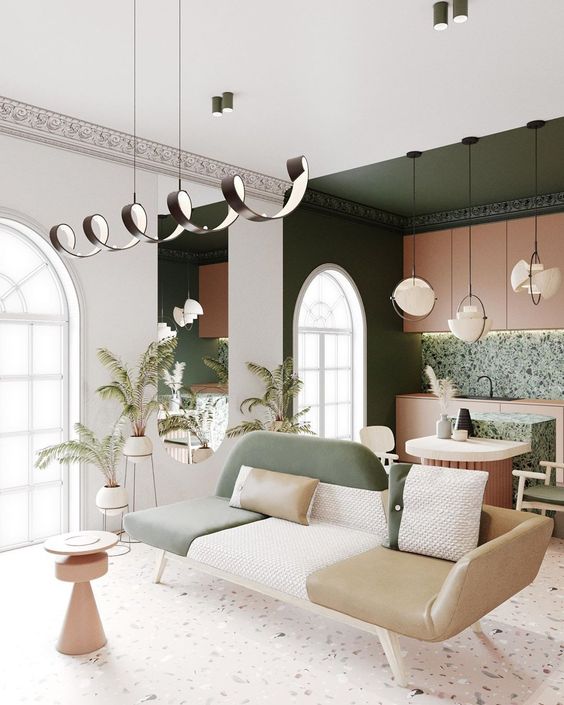
Artificial light is any light source that is not naturally occurring. Artificial lights can be controlled to create a functional space but also to set a mood and achieve ambiance. It can be bright or soft and diffused, where the intensity may be regulated with the use of a dimmer control. It can be used to highlight a space and establish a focal point on a specific feature.
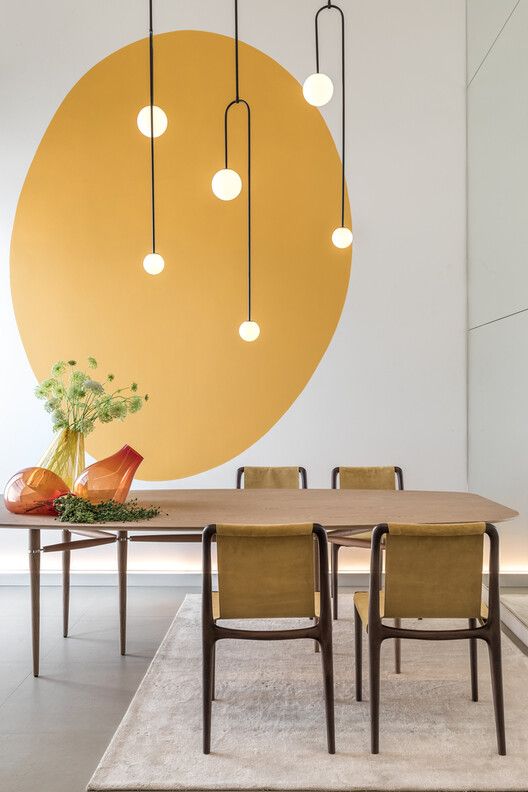
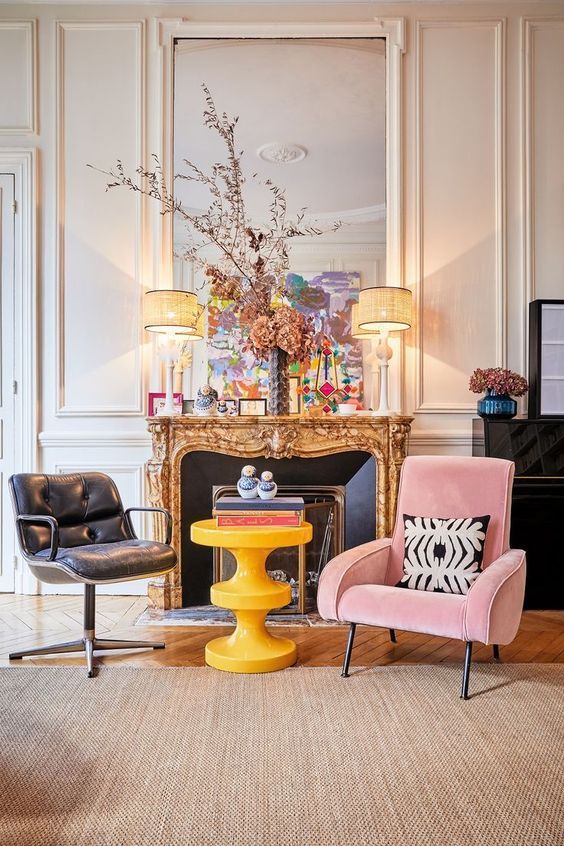
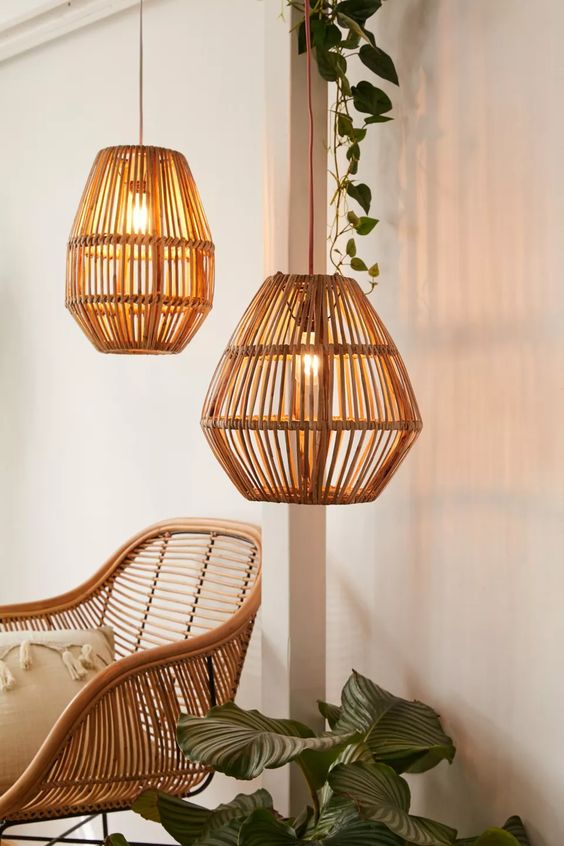
Pattern
A pattern is the repetition of more than one design element, for example, lines, shapes, forms, or colors. This can also be defined as a "motif".
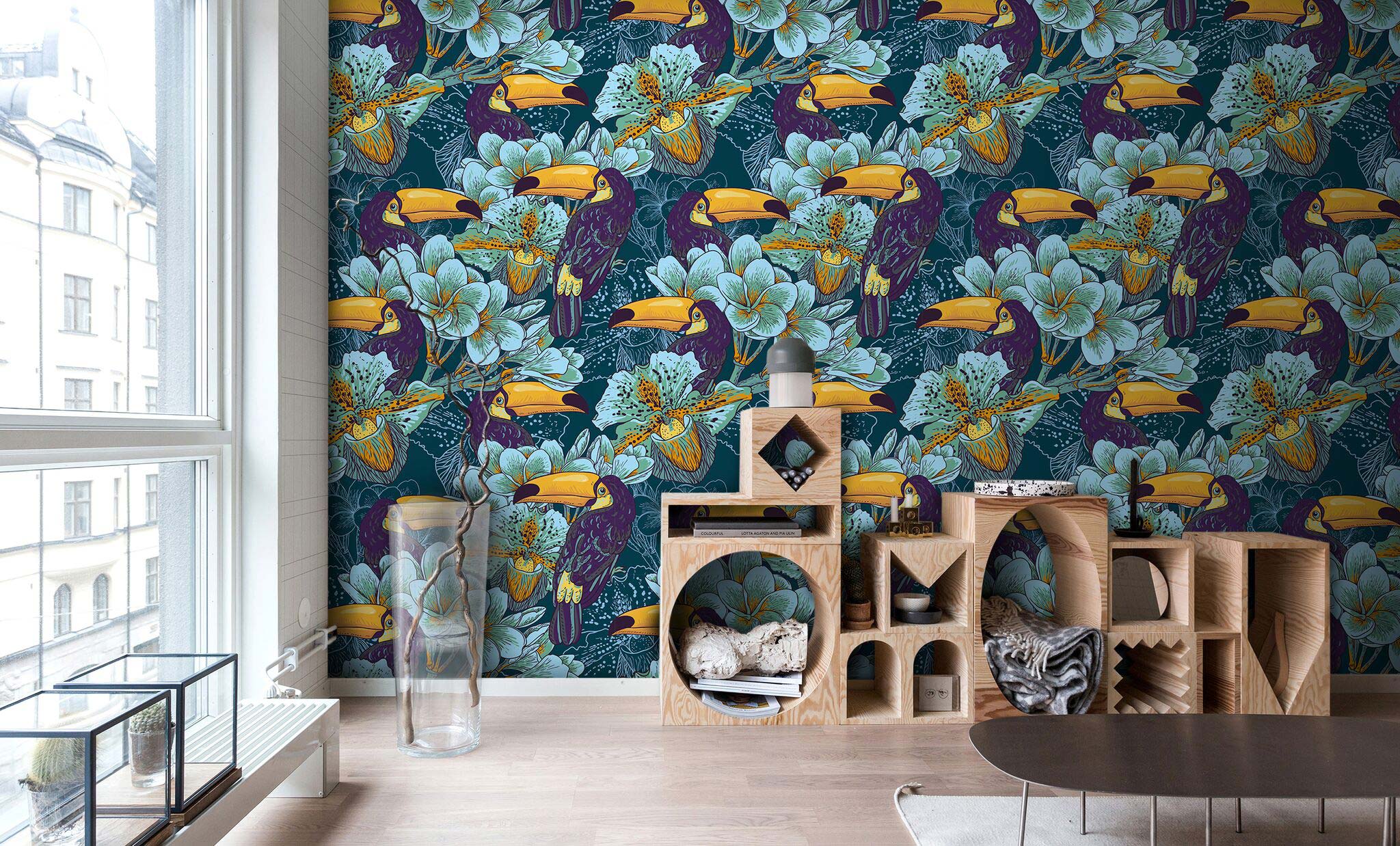
The presence of pattern brings life, interest, and contrast into a composition, bringing together all the design elements.
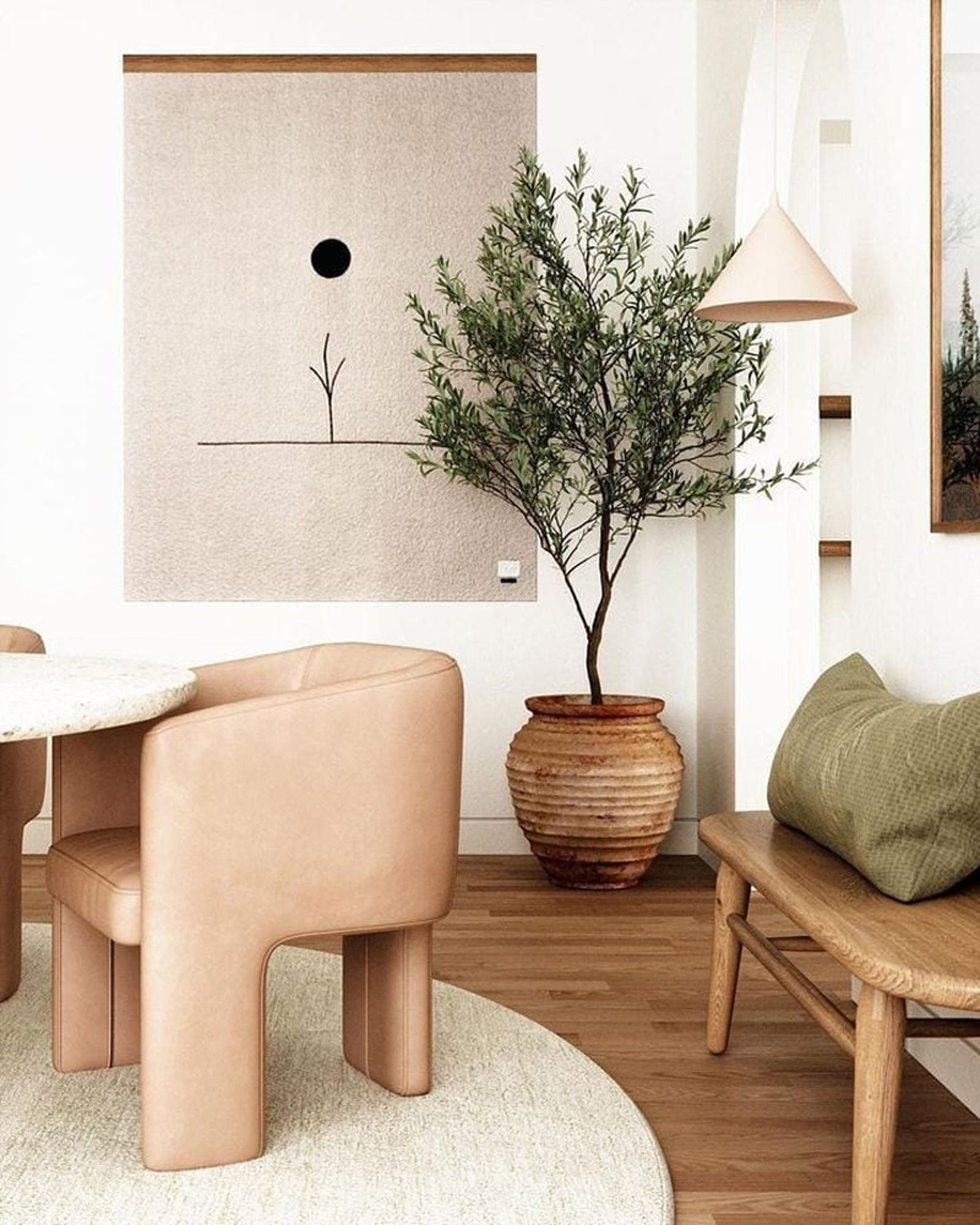
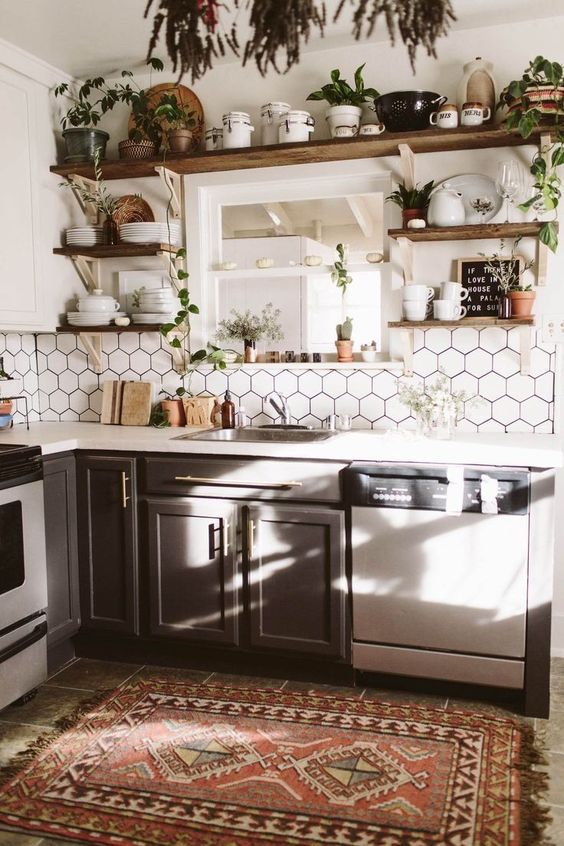
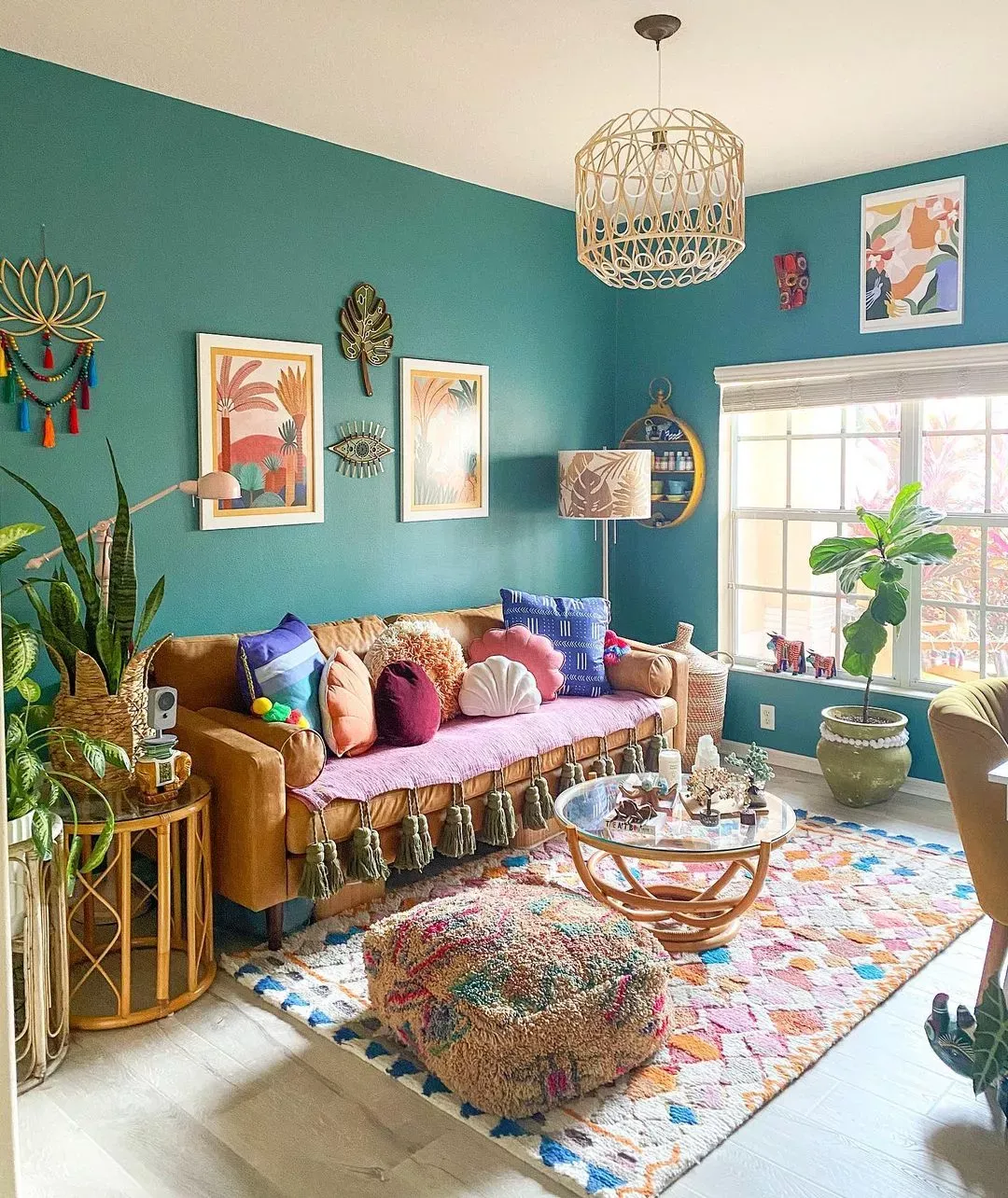
Patterns can be found and created in many different ways. Like stone or brick walls, wallpapers, decorative elements, furniture, and lights, but also in the architectural structure of the space itself. They help set a mood or create a particular theme.
